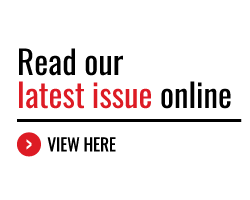Another lap
By Alan Mudie, head of Research and Strategy, Societe Generale Private Banking
The outlook for 2018 looks very familiar to keen observers of economies and markets. As was the case in 2017, we expect synchronized growth, sub-par inflation and stimulative monetary and fiscal policy, creating a supportive environment for risk assets such as equities.
Main Street versus Wall Street
In the years following the Global Financial Crisis and Great Recession, many observers were struck by the gap between sluggish economies and booming asset markets.
On one hand, companies were reluctant to expand their workforce or to make new capital expenditure commitments. This meant that many workers felt they were losing out, with talk of a jobless recovery. Low capital spending led to low productivity growth, implying little room for wage increases. And spiralling costs – e.g., for healthcare in the United States – suggested a decline in living standards.
On the other, interest rates were cut close to or below zero in an attempt to kick-start growth, pulling government bond yields down to historic lows in their wake. This meant less income for depositors, falling net interest margins for banks and rising liabilities for pension funds. Investors felt compelled to stretch for returns in riskier categories of bonds, pushing prices higher and yields lower. In turn, this helped spark a long bull-run in equity markets.
As has become apparent with the increasingly polarized political landscape, the benefits of the rise in asset values accrued in the main to a small number of already wealthy individuals, and the painful recovery from the crisis was mainly felt by the working and middle classes. It is hardly surprising that non-mainstream politicians and parties have gained such traction in recent years.
At last!
But at the same time as Donald Trump and Emmanuel Macron were seizing their presidencies, signs were emerging that a healthier economic recovery was underway.
First, the long slump in global trade has begun to reverse. Volume growth averaged 2.2% between 2010 and 2016, well below the long-run average of just under 5%, but accelerated to 5.1% in 2017. Despite worries about “deglobalisation” and protectionism, the synchronized upswing in the global economy is bearing fruit.
Second, companies around the world have begun to sanction higher capital expenditure budgets. And we continue to note signs of growth in corporate capex plans – Standard & Poor’s forecast an increase of 5.5% in 2017, after four years of declines. If confirmed, these increases suggest that we can look forward to improvements in productivity, which might open the door to higher wage settlements at long last.
Third, the Organisation for Economic Cooperation and Development’s latest Economic Outlook report forecasts an acceleration in global growth from 3.1% in 2016 to 3.6% last year, strengthening further to 3.7% in 2018. This is very close to the 1990-2007 average, encouraging news especially given that not one of the 45 countries covered is expected to contract over the next three years.
Finally, the United States Federal Reserve System has developed both a template for normalization for other central banks to follow – taper asset purchases and then halt them, hike rates then hike again and finally unwind securities holdings – and two guiding principles to achieve success, i.e. management of expectations and gradual implementation. For 2018, the economic outlook suggests further normalization but sluggish inflation means central banks will be in no hurry to over-tighten policy settings – all in all, a rather benign environment.
Staying the course
When we turn to financial markets, further similarities emerge. Corporate earnings growth is globally robust – the combination of low borrowing costs, negligible wage growth and strong demand helped boost profitability last year and should do so again next. Strong growth and rising inflation should eventually lift the long end of the curve. Credit spreads – the difference between sovereign and corporate bond yields – are narrow and should remain so. And expansion mode in the global economy tends to favour equity markets.
This being said, the economic expansion is well advanced in comparison with previous cycles, the positive backdrop described above is increasingly recognized by a broad consensus of investors and valuations across asset classes are stretched. As we embark on Another Lap of the economic and market track, the environment looks reassuringly familiar but we must be aware that the easy part of the race is behind us – it will be tough to maintain the same rate of progress this year.





